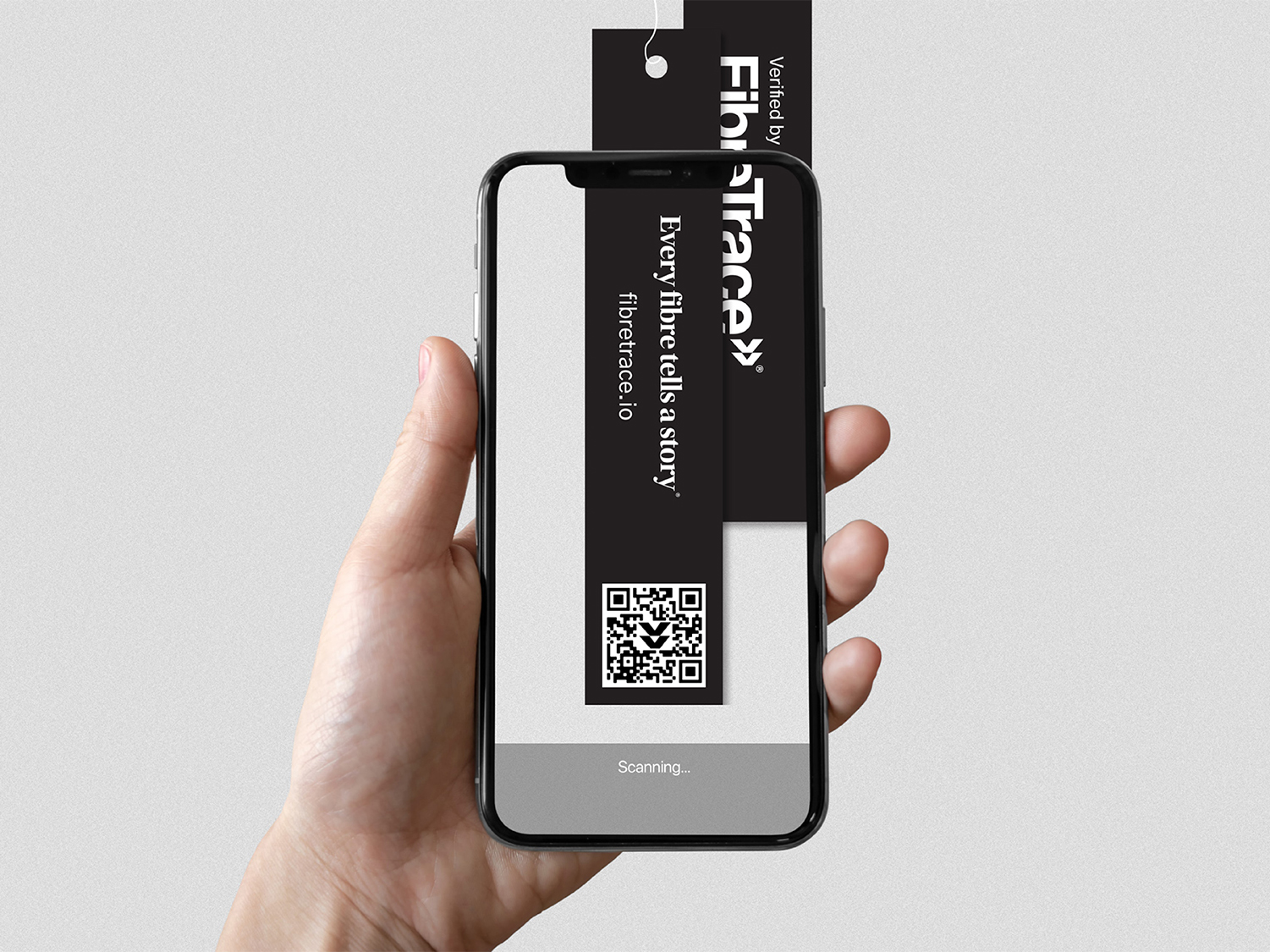
Sponsored by FibreTrace
Twenty-twenty vision of the fashion supply chain is paramount, says traceability technology provider FibreTrace.
Today, 60% of fashion consumers want more transparency about their products, writes Fashion Revolution in its Fashion Transparency Index Report for 2022. Despite this demand, 50% of the world’s largest fashion brands and retailers disclose little or no information about their supply chain, according to Fashion Revolution – however, this is changing fast due to digital transparency tools.
Despite this, a clear pathway to transparency is often difficult to find. Costly, inaccessible digital transparency tools create a barrier – and behind this, manufacturers and brands are at risk of remaining opaque or falling behind contemporary requirements for transparency. Even those with access to transparency tools do not always find success, which leads to accusations of greenwashing.
Transparency technology player FibreTrace has been the first to put their hand up to remove the cost barrier in a bid to help the industry accelerate positive change. The company has released a new digital traceability platform to the global textile industry free of charge titled FibreTrace MAPPED.
Shannon Mercer, chief executive officer (CEO) at FibreTrace, notes that FibreTrace MAPPED can act as a tool to map out global textile supply chains while also allowing users to centralise social and environmental certifications aligned with specific purchase orders within the supply chain. Doubly, in collaboration with its tracer technologies known as FibreTrace Verified, true environmental transparency and traceability can be achieved.
Why adopt transparency and traceability tools?
Transparency, by definition, involves the demystification of supply chains to improve clarity and awareness of a product’s supply chain journey. This would constitute country of origin, shipping information, place of manufacture and further processing information, among additional insightful information that can provide value to the supply chain. Meanwhile, within the supply chain itself, traceability allows the identification, tracking and tracing of said product or elements of the product as it travels from raw goods to the consumer.
Demand for more transparency does not only come from consumers and environmental activists. US and EU governments have released strategies that drive fashion and interior players to demonstrate evidence of supply chain traceability. Meanwhile, aforementioned controversies may increase the layman’s understanding of supply chain opacity, further adding to pressures for brands to be open and honest about production processes.
Generating positive change with open access
In January 2023, the open-access, free platform will be launched by the eponymous technologists. The platform will allow brands and manufacturers to effectively map their supply chains, free-of-charge.
The impact of this technology being made free and accessible could be gargantuan. Considering global regulation and sustainable goals – such as the United Nations’ (UNs’) Sustainable Development Goals (SDGs) – FibreTrace MAPPED marks an integral step towards global fashion industry transparency for all supply chain agents in an industry marred by inequality and inaccessibility.
Mercer comments: “We believe there should be no barrier to transparency; no reason for the global fashion and interior industries to not take the necessary step forward. Therefore, it was important for us to release FibreTrace MAPPED to the industry, free of charge.”
Mapping the supply chain
The FibreTrace MAPPED platform is a digital transparency solution. It logs the global textile supply chain from fibre to retail in a digital, centralised chain of custody platform and allows the transparent mapping of global supply chains including supplier name, type and location. The process integrates QR code technologies to track global supply chain movements live and is powered by blockchain security.
Within the platform is a comprehensive “My Company” page: brand facilities, manufacturing sites, warehouse locations, colleagues and even social media links can be added to the profile. In clicking through to manufacturing sites, brands can see (a) process types, (b) process categories, (c) process names, (d) descriptions, (e) images and videos and (f) certificates. This is then whittled down to product: all manufacturers must add the various products they manufacture to the platform. Product orders are tracked this way, ensuring all information on a single product is logged and traced.
The tracing process begins in the My Orders tab. An order is created: a product is chosen (either cotton bale, yarn, fabric, garment or otherwise) and quantity of output specified. FibreTrace MAPPED generates unique QR codes to track the product and share the story with the consumer, and in the near future the platform will also generate transaction certificates and additional reporting insights.
All this acquired, valuable data is protected, too. Input information is only available to the people a brand invites to the platform, and the data is owned by the brand, meaning there is high data security.
Mercer notes that because public failure is a key deterrent to starting the transparency journey this data privacy should encourage more brands to leap into transparency.
In saying that, FibreTrace MAPPED also allows brands and manufacturers to publish their information to a business-to-consumer (B2C) website, encouraging the industry to empower the consumer in knowing more about their products.
Increasing accountability and targeting greenwashing
The accessibility of the platform means an equity is offered to the whole industry. As many are aware, the implementation of transparency and traceability reaps plentiful benefits.
Mercer notes: “Effective traceability has been shown to reduce lead times and lower coordination and management costs – all elements that have a significant impact on the profitability of a business.
“[And] by providing transparency for free, this allows the companies proven to face difficulty accessing capabilities and resources a means to improve productivity and output.”
The demystification of supply chains undoubtedly increases social and environmental accountability. Mercer explains that without transparency, brands cannot establish an effective environmental or social strategy for a business. A lack of accountability within the textile industry has “left the door wide open for social and environmental neglect and misconduct,” says FibreTrace. “Brands have an obligation to look at their supply chain, identify issues and address them.”
Doubly, since 50% of the world’s largest fashion brands and retailers are disclosing little or no information about their supply chains, FibreTrace believes faster change is needed and that MAPPED is well prepared to support transformation.
By attaching digital certificates to products – such as QR codes – both small and big brands can communicate with their consumers about the processes that constitute their products, highlighting there are no instances of malpractice along the supply chain. Certifications can be attached to these digital birth certificates, too, meaning supply chain agents or consumers can be more aware of the socially and environmentally sustainable credentials of an item.
Mercer comments: “We have seen several case studies from our brand partners where sharing the traceability journey with the consumer has resulted in increased sell-through of collections, signalling strong consumer desire and propensity to pay for transparency.”
How to take digital traceability through to verification?
Traceability tools can also support a reduction of counterfeiting in the fashion industry. The counterfeit market – considered one of the most successful criminal enterprises – has an estimated global value of over US$1.8tn, according to a previous Global Brand Counterfeiting Report. Today, this is expected to be even higher.
Many companies across industries believe counterfeiting is the cost of doing business – an unfortunate result of opacity in the manufacturing supply chain. But in utilising both MAPPED and VERIFIED, products and fibres can be physically traced throughout the supply chain to reduce instances of counterfeiting – the authenticity of products can be confirmed at each stage of interaction down the supply chain.
With FibreTrace taking the step to make its MAPPED technology completely free-of-charge, industry disruptors can continue to push for transparency, traceability and accountability to become part of the new normal.
Mercer concludes: “Our hope is to see MAPPED empower brands and manufacturers to take responsibility for their supply chain choices, and the impact that these decisions have on the environment and our global community.
“By removing the costs involved with digital traceability – a technology that is becoming increasingly necessary due to international government importation strategies – we hope to empower the industry to accelerate necessary improvements.”
To trial FibreTrace MAPPED for free, sign up here: https://webapp.fibretrace.io/
Have your say. Join the conversation and follow us on LinkedIn








